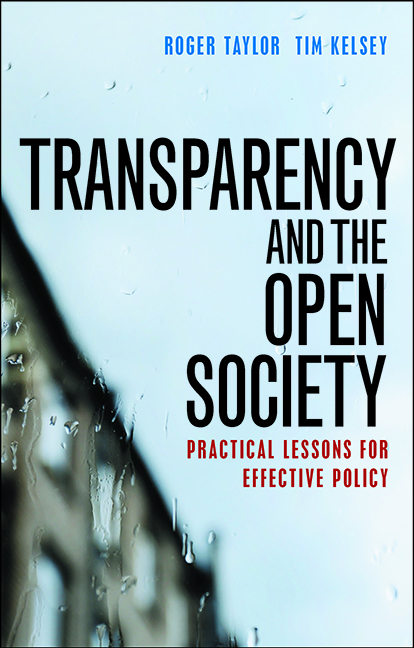5 - Population-level transparency
Published online by Cambridge University Press: 05 April 2022
Summary
Two children, faced with a single slice of pie, have developed what is, perhaps, the world's most perfect allocation mechanism: ‘you cut, I choose’. One child cuts the pie in two, the other picks the piece they prefer. It does not guarantee that they will get equal slices, but it does guarantee that neither party can complain afterwards they were unfairly treated. If you feel you got too small a slice, it can only be because you failed to cut the pie evenly or you picked the wrong piece.
A fair society is built on fair institutions – institutions that do not guarantee a particular outcome for any individual but which embody a natural justice and which can be seen to be fair. ‘You cut, I choose’ works because it combines complete transparency and the appropriate separation of powers ‒ the building blocks of fair systems.
More complex allocation decisions require more complex mechanisms. The idea of a jury trial is simple – separation of judge and jury powers to assess contested evidence from conflicting parties. But this simple idea requires complex implementation with reams of detailed rules and precedents that determine who is allowed to testify, how juries are selected, who is allowed to plead a case, what evidence is admissible and so forth. As institutions get more elaborate, the process becomes less transparent.
Despite their complexity, court rooms and elections are among our most transparent institutional arrangements for politically accountable allocations. This makes them expensive. Most decisions in life cannot be given that much time and attention. Instead decision making is handed to politically accountable executive bodies that make assessments and determine allocations. We attempt to ensure fairness with elaborate systems of operating rules and oversight procedures, including transparency requirements.
But, unlike the ‘you cut, I choose’ example, in more complex scenarios transparency around the rules and the process are insufficient to assess the fairness of the system. It is impossible to tell from an examination of the rules of such systems whether they are fair or not. This is for a number of reasons.
First there is the impossibility of objectively defining a mechanism that produces a uniquely fair outcome from a set of conflicting and inconsistent desires.
- Type
- Chapter
- Information
- Transparency and the Open SocietyPractical Lessons for Effective Policy, pp. 85 - 98Publisher: Bristol University PressPrint publication year: 2016



